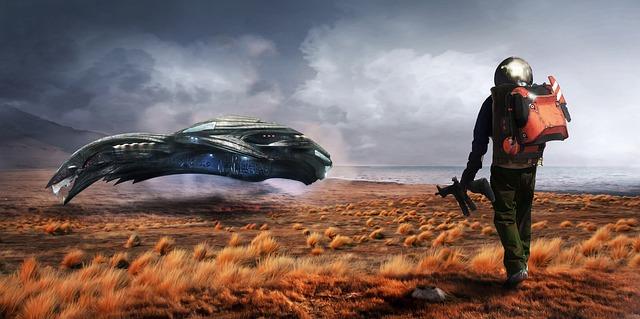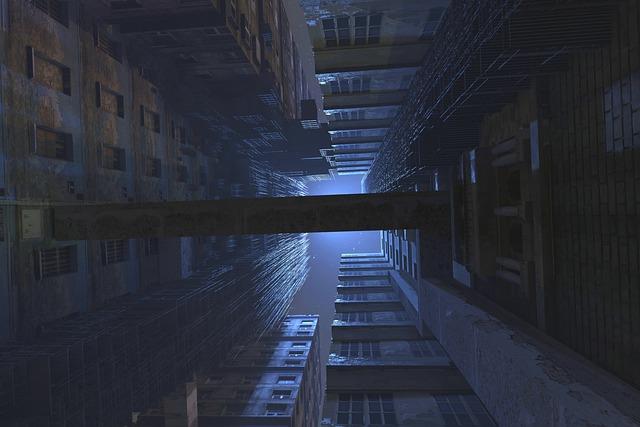In the realm of modern cinema, few films have captured the visual imagination quite like “Blade Runner 2049.” Directed by Denis Villeneuve and brought to life through the lens of cinematographer Roger Deakins, this sequel to the 1982 classic is a masterclass in visual storytelling. As we delve into the intricate world of “Blade Runner 2049,” it becomes evident that every frame is meticulously crafted, each shadow and light interplay serving a purpose far beyond mere aesthetics. This article explores the techniques and artistic choices that make the film a visual masterpiece, examining how Deakins’ work not only enhances the narrative but also sets a new benchmark for cinematic excellence.
Exploring Color Palettes and Lighting Techniques
In “Blade Runner 2049,” the use of color palettes and lighting techniques is nothing short of a masterclass in visual storytelling. Director Denis Villeneuve and cinematographer Roger Deakins meticulously crafted each scene to evoke a specific mood and atmosphere. The film’s color scheme often oscillates between stark contrasts and subtle gradients, immersing the audience in a world that feels both alien and familiar. Muted tones dominate many scenes, creating a sense of dystopian melancholy, while vibrant hues punctuate moments of revelation and emotional intensity.
- Neon and Fluorescence: The pervasive use of neon lighting reflects the chaotic, yet mesmerizing urban landscape.
- Shadow and Contrast: Deep shadows are employed to add depth and mystery, emphasizing the noir elements of the narrative.
- Monochromatic Scenes: Limited color schemes in certain sequences highlight the isolation and bleakness of the characters’ journeys.
Deakins’ lighting techniques are equally impactful, using natural and artificial sources to craft an immersive visual experience. Soft lighting often juxtaposes with harsh, directional light to create tension and drama. This approach not only enhances the narrative but also elevates the film to an art form, where every frame is a carefully composed painting, inviting viewers to explore the deeper layers of the story.

Crafting Atmosphere Through Set Design and Visual Effects
In Blade Runner 2049, the fusion of set design and visual effects crafts a world that is both hauntingly beautiful and eerily dystopian. The film’s atmosphere is meticulously constructed through a combination of physical sets and digital enhancements, immersing the audience in a future that feels palpably real. Production designer Dennis Gassner and visual effects supervisor John Nelson collaborate to create a seamless blend of tangible and intangible elements, crafting environments that are rich in detail and texture.
- Color Palette: The use of muted tones juxtaposed with vibrant neons enhances the sense of a decaying yet technologically advanced society.
- Architectural Design: Massive, brutalist structures loom over the cityscape, embodying the oppressive nature of the world.
- Weather Effects: The persistent rain and fog add layers of mystery and melancholy, influencing the mood of each scene.
The interplay between practical and digital realms is not merely for spectacle but serves to deepen the narrative, reflecting the film’s themes of identity and reality. By carefully balancing these elements, the film achieves a visual poetry that resonates with its audience, leaving a lasting impression long after the credits roll.

Framing and Composition: Building a Futuristic Aesthetic
In “Blade Runner 2049,” the framing and composition transport viewers into a meticulously crafted future. Director Denis Villeneuve, alongside cinematographer Roger Deakins, employs symmetrical compositions and vast, open spaces to emphasize the film’s themes of isolation and existential inquiry. Each frame is a carefully curated tableau, balancing elements of light and shadow to evoke a sense of mystery and tension.
Key techniques include:
– Use of Negative Space: Enhancing the feeling of emptiness and introspection.
– Layered Depths: Creating visual complexity with foreground and background elements.
– Color Palette: Dominated by muted tones interspersed with vibrant neons, reflecting the dichotomy of nature and technology.
These visual strategies not only define the film’s futuristic aesthetic but also invite viewers to ponder the underlying philosophical questions, effectively making the visuals a narrative device in their own right.
Harnessing Technology for Innovative Cinematic Experiences
The groundbreaking visual artistry of Blade Runner 2049 exemplifies how cutting-edge technology can redefine cinematic storytelling. Director Denis Villeneuve and cinematographer Roger Deakins leveraged a suite of advanced tools to craft a dystopian yet visually stunning world. Digital effects played a pivotal role, seamlessly blending CGI with practical sets to create the film’s iconic landscapes. The innovative use of LED lighting panels allowed for dynamic and immersive lighting effects, enhancing the atmospheric depth and mood of each scene.
- High-Resolution Cameras: Captured intricate details, adding to the film’s hyper-realistic aesthetic.
- Advanced Post-Production Techniques: Enabled meticulous color grading, giving each frame its distinct, moody palette.
- Drone Cinematography: Offered unique aerial perspectives, expanding the visual scope and narrative possibilities.
These technological innovations not only pushed the boundaries of visual storytelling but also set new standards in the art of filmmaking, making Blade Runner 2049 a masterclass in utilizing modern technology to enhance cinematic experiences.

